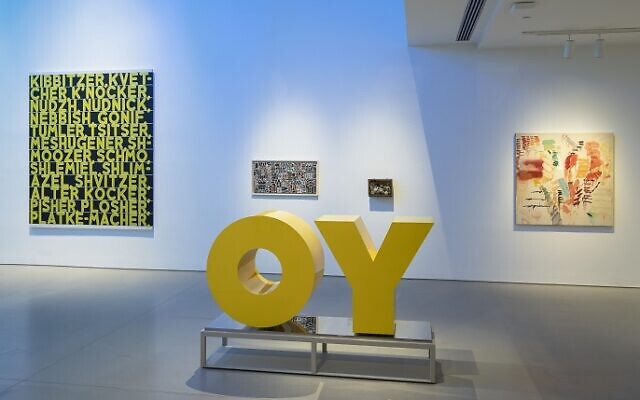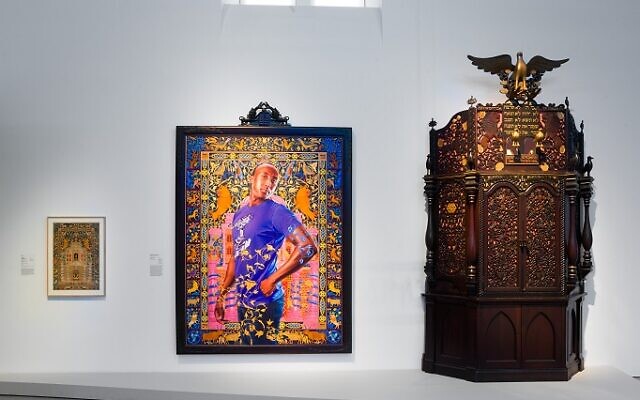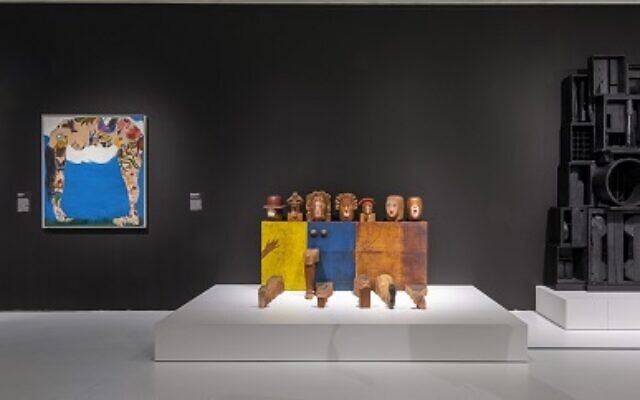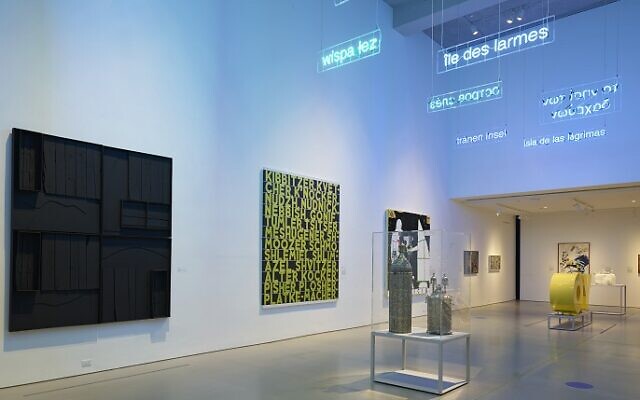What’s Jewish About …The Art World?
The Jewish Museum in New York City was founded in 1904 in the library of the Jewish Theological Seminary and has been housed in the landmark Warburg Mansion on Fifth Avenue and 92nd Street since 1947.
Robyn Spizman Gerson is a New York Times best-selling author of many books, including “When Words Matter Most.” She is also a communications professional and well-known media personality, having appeared often locally on “Atlanta and Company” and nationally on NBC’s “Today” show. For more information go to www.robynspizman.com.

The Jewish Museum in New York City was founded in 1904 in the library of the Jewish Theological Seminary and has been housed in the landmark Warburg Mansion on Fifth Avenue and 92nd Street since 1947.
Claudia Gould became the museum’s Helen Goldsmith Menschel Director in November 2011. In her decades as a museum and arts professional, she has been noted for her commitment to outstanding original programming and an expansive interdisciplinary approach to exhibitions, education and public outreach.
The AJT spoke to Gould about the impact of Jewish artists, how art can lead to a better understanding of others and about the museum’s current exhibition, New York: 1962-1964, on view through Jan. 8, 2023.

What is the purpose of the Jewish Museum?
The Jewish Museum in New York City is an art museum dedicated to illuminating the vibrancy and variety of Jewish culture and history for a global audience. Through distinctive art exhibitions and programs that present the work of diverse artists and thinkers, the Jewish Museum shares ideas, provokes dialogue and promotes understanding among people of all ages and backgrounds. It was the first institution of its kind in the United States and is one of the oldest Jewish museums in the world.
The Jewish Museum’s unique collection comprises nearly 30,000 works of art, ceremonial objects, and media reflecting the worldwide Jewish experience over more than 4,000 years. The Museum aims to deepen access to and understanding of diversity within Jewish culture itself, including the transformative role of artists, collectors, thinkers and educators.

How can art help to explore and illuminate the Jewish experience in the world?
In Scenes from the Collection — our exhibition featuring over 450 works from antiquities to contemporary art — art and Jewish ceremonial objects are shown together, affirming universal values that are shared among people of all faiths and cultural backgrounds. A section of Scenes from the Collection exemplifies the diversity of objects and perspectives presented at the Museum. On one wall is a monumental painting by Kehinde Wiley titled Alios Itzhak (The World Stage: Israel, 2011). Wiley, an African American artist, created many portraits of young Israeli men of diverse backgrounds: Ethiopian-Israeli Jews, native-born Israeli Jews and Arab-Israelis. For his Israeli works, Wiley embedded each contemporary portrait in a background inspired by traditional Jewish ceremonial papercuts. A 19th-century mizrah has been exhibited next to the painting along with an 1899 Torah ark.
How can art effect a better understanding of Jewish culture and a better understanding of people from different backgrounds?
Through talks and performances, both virtual and in-person, attendees can enjoy insightful discussions, engaging conversations and diverse performances inspired by the Museum’s exhibitions, culture at large and current events. Educator-led virtual tours can be customized and are available for adult, school and family groups. Our new digital guide on Bloomberg Connects, the free arts and culture app available for download, makes the Jewish Museum accessible for either onsite or offsite visits through photo, audio and video. It features insights into the Museum’s exhibitions, programs and collection.

Tell us about your current exhibition, “New York: 1962-1964.”
In the exhibition New York: 1962-1964, on view through Jan. 8, 2023, visitors can explore how artists living and working in New York City responded to epoch-changing events as such as the Cuban Missile Crisis (1962), March on Washington for Jobs and Freedom (1963) and the assassination of President John F. Kennedy (1963). Installed across two floors, this immersive exhibition presents more than 180 artworks — all made or seen in New York City between 1962 and 1964 — including painting, sculpture, photography and film, alongside fashion, design, dance, poetry and ephemera. Artists featured include Jasper Johns and Robert Rauschenberg, among many others.
Tell us what you mean by the term “The New Art” and how it impacted life in the art world.
Alan Solomon, the Museum’s director from 1962 to 1964, organized a series of exhibitions dedicated to what he called “The New Art” — work by artists who lived in New York and engaged with the city in new ways. In 1964, Solomon was invited to curate the 32nd Venice Biennale. One of the artists he championed, Robert Rauschenberg, won the International Grand Prize in Painting, and that victory cemented New York’s position as the center of the art world. During Solomon’s tenure, the Jewish Museum provided a home for Jewish gallerists and collectors. Many of Solomon’s partners and colleagues would go on to become art-world influencers, assembling comprehensive collections of post-war American art and joining museum boards.
Which Jewish artists are best known or featured in your current exhibition?
Among the exceptional artists included in the exhibition, many were or are Jewish, including Diane Arbus, Louis Bernstein, Rosalyn Drexler, Martha Edelheit, Audrey Flack, Leonard Freed, Lee Friedlander, Nancy Grossman, Boris Lurie, Louise Nevelson, Larry Rivers, Miriam Schapiro, Carolee Schneemann, Paul Schutzer and George Segal, as well as fashion designer Rudi Gernreich and dancer/choreographers Judith Dunn and Yvonne Rainer.
For more, visit www.thejewishmuseum.org.
- What's Jewish About
- art
- Robyn Spizman Gerson
- The Jewish Museum
- Jewish Theological Seminary
- Claudia Gould
- Helen Goldsmith Menschel Director
- Jewish artists
- ceremonial objects
- Scenes from the Collection
- antiquities
- contemporary art
- Kehinde Wiley
- Ethiopian-Israeli Jews
- Bloomberg Connects
- Cuban Missile Crisis
- March on Washington for Jobs and Freedom
- President John F. Kennedy
- Painting
- Sculpture
- photography and film
- alongside fashion
- design
- dance
- poetry
- ephemera
- Alan Solomon
- Robert Rauschenberg
- Diane Arbus
- Louis Bernstein
- Rosalyn Drexler
- Martha Edelheit
- Audrey Flack
- Leonard Freed
- Lee Friedlander
- Nancy Grossman
- Boris Lurie
- Louise Nevelson
- Larry Rivers
- Miriam Schapiro
- Carolee Schneemann
- Paul Schutzer and George Segal
- Yvonne Rainer



comments